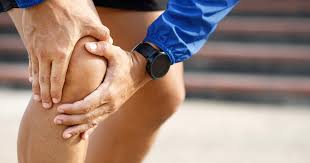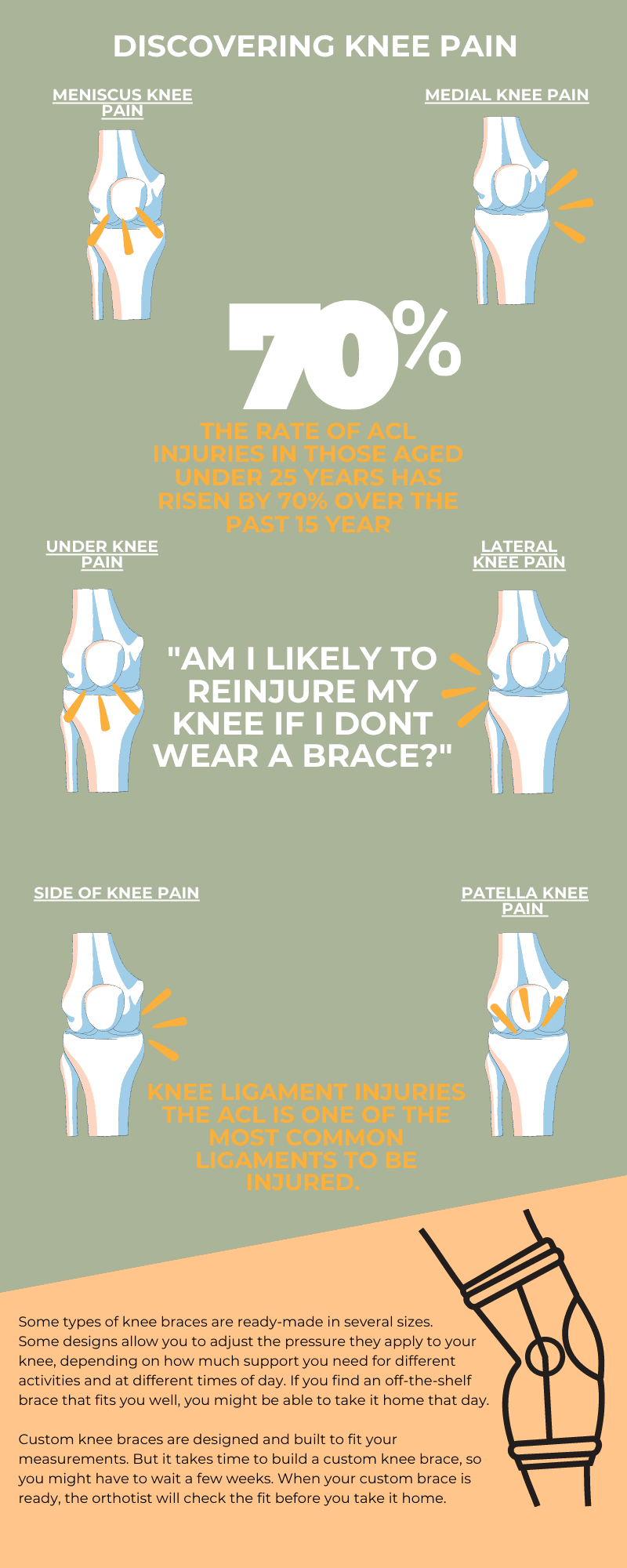Often described by people who suffer inability to weight shift on one foot is a common symptom of knee pain. It may indicate that your knee is inflamed or that there is something structurally wrong.
Knee joint pain and swelling is a common complaint for most people. It is possible for there to be a combination of different underlying causes for knee joint pain and swelling. The best way to manage knee joint pain and swelling is by identifying the underlying cause, taking steps to treat the underlying cause.
Knee pain is usually identified with –
Pain in side of knee / side of knee pain
Medial knee pain
Under knee pain
Pain under kneecap
Lateral knee pain
Patella pain
Below the knee pain
There are many treatments available for knee joint pain and swelling, including Knee Bracing, physical therapy, and surgery. This can help to ensure that the knee joint pain and swelling improves as treatment progresses.
Identify Knee Pain
The knee is a complex joint with many moving parts. If it’s anything, it’s a hinge. That means we have two hinges: one on each side of the joint that allow us to bend, flex and extend our legs. But it isn’t always happy with its job conditions, especially when there are severe overuse injuries such as runner’s knee or patellofemoral pain syndrome (knee pain that affects runners). Knees naturally need to bear weight, but when they are expected to absorb more than 20 pounds of force at every step, they can develop stress reactions and tears in their ligaments.
What is knee pain?
Knee pain is an aching or throbbing sensation in the knee joint, which can be caused by problems such as tears in ligaments, tightness of muscles and overuse injuries.
It can sometimes be difficult to determine whether your knee pain is due to injury or from overuse; however, if you have noticed any of these symptoms then it’s probably best to get advice from a doctor:
– If your knee worsens when you put weight on it
– If your knee hurts when bending your leg
– If you are unable to walk
– If you cannot straighten your leg out anymore
Causes of Knee Pain
Some of the most common causes of knee pain are overuse injuries. If you’ve been running for a long time or have a repetitive job, your knees can be prone to injury. Over time, these changes in the tissues cause issues like patellofemoral pain syndrome and runner’s knee. Other causes include osteoarthritis and rheumatoid arthritis.
There are also many possible risk factors that can increase your chances of developing kneepain. These include:
Age (especially in older adults)
Gender (more women experience knee pain than men)
Lifestyle choices
Nutritional deficiencies
Inactivity or lack of physical activity
Treatment of knee pain
If you have knee pain, it is important to take care of yourself. While the treatment of patellofemoral pain syndrome is exceedingly complex, there are some basic steps you can take to help relieve your symptoms and speed the healing process.
– Rest your knee after a workout or in between exercises.
– Maintain a healthy weight with regular walking and exercise.
– If necessary, apply ice, heat or electrical pads to reduce inflammation.
– Seek medical attention if the pain doesn’t improve within one week or worsens. With that said, most people treat their own knee pain with a combination of these treatments and self-care measures such as rest, icing and stretching.


